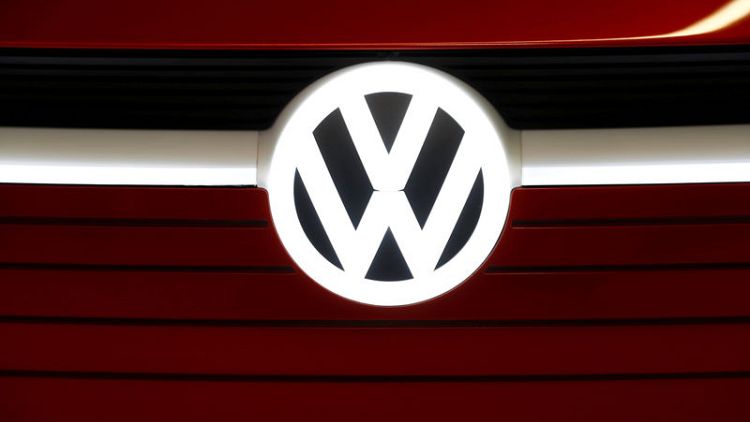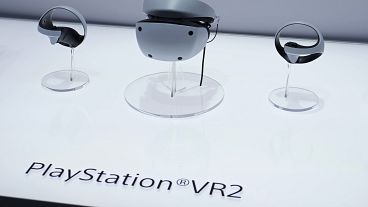By Douglas Busvine
FRANKFURT (Reuters) - The European Commission's push to implement a Wi-Fi standard for connected cars has won the support of lawmakers in a victory for Germany's Volkswagen, although competitor BMW and other backers of a rival technology still hope to overturn the decision.
Advocates of the alternative C-V2X standard - which stands for Cellular Vehicle to Everything - say their technology is already viable and will only improve as next-generation 5G mobile networks are rolled out.
The apparently dry debate over acronyms has divided the car and telecoms industries and will influence which continent ends up dominating automated driving technologies that promise to be safer than people behind the wheel.
There are around 25,000 annual road fatalities in the EU and another 135,000 serious injuries. The Commission wants to halve both by 2030 as part of a long-term 'Vision Zero' goal to virtually eliminate them by 2050.
China, the world's biggest car market, is already pressing ahead with C-V2X, which is designed to work with 5G but is incompatible with Wi-Fi. Ford will deploy C-V2X there in 2021 and has committed to install it in all its new cars and trucks in the United States from 2022.
The European Council, the intergovernmental part of the EU's decision-making process, is due to take a decision by mid-May.
Here's an explainer of what's at stake and how the process is likely to play out:
WHAT IS THE COMMISSION PROPOSING AND WHO BACKS IT?
The European Commission has proposed a legal act to regulate so-called 'Cooperative-Intelligent Transport Systems' (C-ITS). This backs the ITS-G5 Wi-Fi standard that has already been adopted by much of the auto industry and is already certified.
The most prominent supporter of ITS-G5 is Volkswagen, which says it will start fitting the Wi-Fi technology to vehicles this year.
VW argues that viable C-V2X technology is years away, while Commission researchers could not find any commercially available C-V2X gear to test, according to a document seen by Reuters.
Also backing ITS-G5 are Renault, Toyota, VW truck units MAN and Scania, chip maker NXP, road-toll company Kapsch and technical standards umbrella group VdTueV.
WHY DO OTHER AUTO MAKERS AND TELECOMS PREFER 5G?
Supporters of C-V2X have grown rapidly in number since eight companies - Audi, BMW, Daimler, Ericsson, Huawei, Intel, Nokia and Qualcomm - founded an alliance in 2016.
The group, the 5G Automotive Association (5GAA), now counts more than 100 members who argue that C-V2X is better than Wi-Fi in terms of security, reliability, range and reaction time.
5G advocates object to a review process foreseen by the Commission that would allow other technologies to be admitted later to C-ITS, once certified. They say such interoperability is impossible because Wi-Fi and cellular radio technologies are incompatible.
"It's like putting a DVD into a VHS player and trying to make it work," Mats Granryd, head of the GSMA telecoms industry group, wrote in a letter to EU lawmakers this week.
WHICH IS THE BETTER TECHNOLOGY?
Participants in the debate agree that C-V2X running on 5G networks will be the better technology - even Volkswagen is a member of the 5GAA - but they differ on when it will be ready for prime time.
C-V2X could, for example, help a connected car spot a person on foot carrying a smartphone before the driver does, making it possible for automated systems to hit the brakes and alert the pedestrian to the danger - a potential lifesaver.
Wi-Fi is cheaper, because 5G operators would charge for data. On the other hand, regulated mobile networks would likely be safer, says independent technology analyst Richard Windsor: "Would you trust your vehicle to be driven by a home router?" he asked.
Other markets led by China are meanwhile pressing ahead with C-V2X, potentially burdening European auto makers with the expense of developing and installing different systems in cars for the home market and for export.
WHO'S LIKELY TO PREVAIL IN THE END?
European lawmakers passed the Commission's legal act by a narrow majority on Wednesday and the matter now goes before the European Council.
Here, opponents of the Commission's proposal would need the backing of a so-called qualified majority of the EU's 28 member states - 16 countries representing 65 percent of its population - to block it.
That will be a tall order, but 5G backers are hoping that a sceptical opinion expressed by the Commission's own legal advisory team will bolster their case, say sources. A Council working party meets again on May 3 and May 10 to review that advice.
The government of EU heavyweight Germany says it has taken note of those reservations and has yet to make up its mind. A decision in the Council is due by May 13, although the review period may be extended.
(Reporting by Douglas Busvine; Editing by Georgina Prodhan and Kirsten Donovan)



